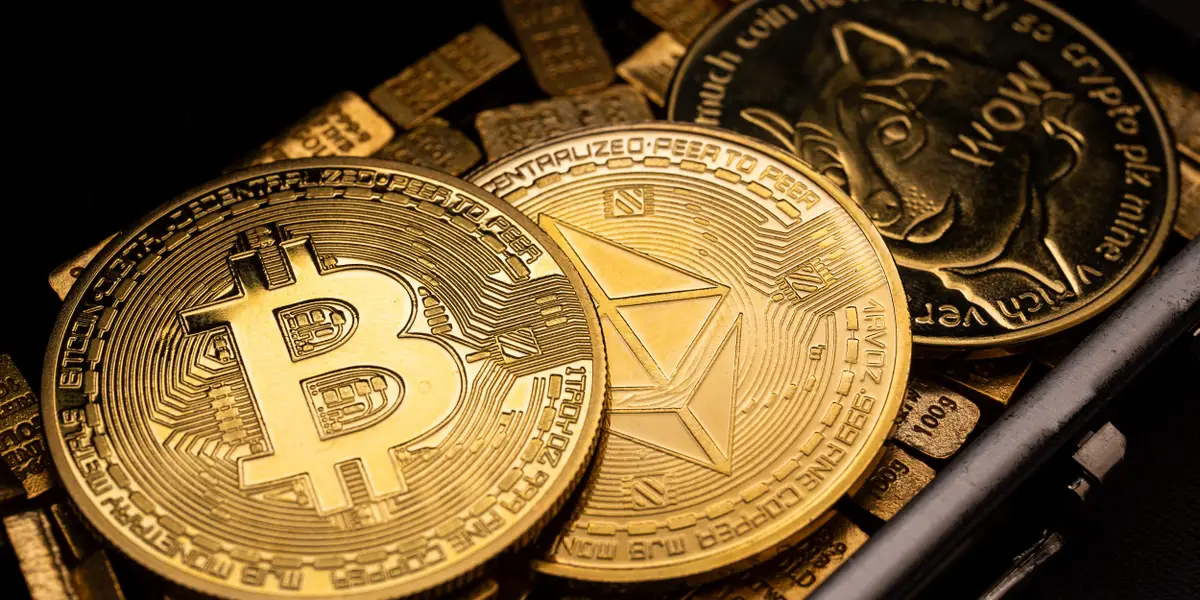Understanding the World of Altcoins
In recent years, the world of digital money has grown far beyond Bitcoin. Today, thousands of alt coins offer investors new ways to earn, trade, and experiment with technology. But many beginners still ask one simple question: co to są altcoiny? or, in English, “what are altcoins?”
Altcoins — short for “alternative coins” — are cryptocurrencies that were created after Bitcoin. They are built on similar blockchain technology but often come with new features or goals. Some aim to process transactions faster, others focus on privacy or smart contracts. Together, they make up a large part of the crypto market and give investors more choice than ever before.
For people in Poland who want to explore crypto investing, understanding altcoiny co to is an important first step. Every bitcoin alternative carries its own potential and its own risks. That’s why it’s essential to learn the basics before buying or trading them.
Our platform, Polinortix, helps investors get started in this dynamic world. We provide simple tools to analyze, buy, and track altcoins safely. Whether you’re new to crypto or looking to expand your portfolio, this guide will help you make smarter choices about alternative coins.
In the following sections, we’ll explain what altcoins really are, how they work, and why they exist. You’ll learn about the main types of alt coins, how to invest wisely, and how to keep them safe. By the end, you’ll have a clear picture of where these bitcoin alternatives fit in today’s financial world — and how to use them to your advantage.
What Are Altcoins? (Altcoiny co to)
So, co to są altcoiny? In simple words, altcoins are all cryptocurrencies other than Bitcoin. The name comes from “alternative coins,” meaning that they are alternatives to Bitcoin — or, as many call them, bitcoin alternatives. They share the same blockchain foundation but differ in how they work, what problems they solve, and how people use them.
Every alt coin operates on its own rules. Some focus on faster payments, others on privacy, smart contracts, or decentralized applications. For example, Ethereum allows developers to build apps directly on the blockchain, while Litecoin was created to make transactions quicker and cheaper than Bitcoin. Each project adds something unique to the crypto world.
There are now thousands of alternative coins available, and new ones appear almost every month. Some become very popular — like Ethereum, Cardano, or Solana — while others fade away. This variety gives investors both opportunities and challenges. It’s not only about price; it’s about understanding what each coin is designed to do.
Below is a short overview of the main categories of altcoins:
| Type | Main Purpose | Example |
| Utility Coins | Used inside specific platforms for services or transactions. | Ethereum (ETH), Binance Coin (BNB) |
| Stablecoins | Connected to real assets like USD to reduce price swings. | Tether (USDT), USD Coin (USDC) |
| Security Tokens | Represent ownership in a company or project. | Polygon (MATIC), Quant (QNT) |
| Privacy Coins | Focus on anonymous transactions. | Monero (XMR), Zcash (ZEC) |
| Meme Coins | Created for fun but can gain real value due to online hype. | DogeCoin (DOGE), Shiba Inu (SHIB) |
As you can see, alt coins are not all the same. Some are serious projects with strong technology and real-world uses. Others exist mainly as experiments or jokes. Before investing, it’s wise to study each alternative coin carefully — its team, goals, and technology. Our platform, Polinortix, helps users check this information easily and compare coins side by side, making smart investing simpler for beginners.
In the next section, we’ll explore why altcoins exist — what makes them important and how they improve on Bitcoin’s original idea.
Why Altcoins Exist – The Purpose of Bitcoin Alternatives
Bitcoin was the first cryptocurrency, but it was never perfect. As the crypto world grew, developers saw its limits — slow transactions, high energy use, and few options for building extra functions. That’s why alt coins were created. Each one tries to fix something that Bitcoin couldn’t, making them true bitcoin alternatives.
For example, Ethereum introduced smart contracts — programs that run automatically when conditions are met. This innovation made it possible to build decentralized applications (DApps), opening a whole new world of crypto projects. Cardano focused on sustainability, while Solana improved transaction speed. Others, like Monero, concentrated on privacy and anonymity. Every alternative coin aims to bring something new to the table.
The main goals behind altcoiny co to are simple:
- Innovation: Create better or faster technology than Bitcoin.
- Accessibility: Make crypto easier and cheaper to use for everyone.
- Diversity: Offer different investment and payment options.
- Community control: Some altcoins give users voting rights in project decisions.
While Bitcoin remains the “gold standard” of crypto, alternative coins have become the testing ground for new ideas. They help push the industry forward, from faster blockchains to eco-friendly solutions and decentralized finance (DeFi).
Investors often see altcoins as a way to diversify their portfolios. Putting all your money into Bitcoin can be risky, especially when the market changes fast. But owning a mix of alt coins allows you to balance risk and explore new opportunities. On Polinortix, users can easily compare different altcoins and see how each performs over time — all in one place.
In short, altcoins exist to improve, experiment, and expand what Bitcoin started. They are not just competitors but essential parts of a bigger crypto ecosystem — a space where innovation never stops. In the next section, we’ll look at the main types of altcoins and what makes each one unique.
Main Types of Altcoins Explained
Altcoins come in many forms, and each group serves a different purpose in the crypto world. Knowing how to tell them apart helps investors make better decisions. Below, we’ll explore the most common types of alt coins and what makes each category special.
1. Utility Coins
Utility coins are the most common kind of alternative coins. They give users access to specific services or features inside a blockchain network. For example, Ethereum (ETH) is used to pay for smart contracts and decentralized applications, while Binance Coin (BNB) helps users save on trading fees on the Binance exchange. These coins have real functions, not just speculative value.
2. Stablecoins
Stablecoins are designed to avoid the big price swings that most alt coins face. They are tied to stable assets like the U.S. dollar or gold. Examples include Tether (USDT) and USD Coin (USDC). Because their price remains steady, stablecoins are often used for transferring money or protecting funds during market downturns.
3. Security Tokens
Security tokens represent ownership or shares in a company or project. They follow financial regulations and give investors rights similar to traditional stocks. These bitcoin alternatives connect the crypto world with real business assets. Projects like Polygon (MATIC) and Quant (QNT) often serve this role by supporting regulated blockchain operations.
4. Privacy Coins
Some users want their transactions to stay private. That’s where privacy coins come in. Cryptocurrencies like Monero (XMR) and Zcash (ZEC) hide transaction details, offering more anonymity than Bitcoin. However, privacy coins often face legal challenges because they can be used for illegal activities — so investors should be cautious.
5. Meme Coins
Meme coins started as jokes, but some became serious investments. The most famous examples are Dogecoin (DOGE) and Shiba Inu (SHIB). Their value often comes from community hype and social media trends, not from technology or utility. Still, they show how powerful online communities can be in driving demand for alternative coins.
6. Governance Coins
Governance coins give users voting power in decentralized organizations. Holders can vote on network upgrades, rules, or fund allocations. Uniswap (UNI) and Aave (AAVE) are examples where investors help guide project decisions — turning communities into active managers of blockchain ecosystems.
Here’s a quick summary of how these categories compare:
| Category | Main Feature | Example |
| Utility Coins | Access to blockchain services | Ethereum, Binance Coin |
| Stablecoins | Price stability linked to real assets | USDT, USDC |
| Security Tokens | Represent ownership or shares | Quant, Polygon |
| Privacy Coins | Anonymous transactions | Monero, Zcash |
| Meme Coins | Driven by community hype | Dogecoin, Shiba Inu |
| Governance Coins | User voting and decision power | Uniswap, Aave |
Each type of alt coin offers different opportunities — from practical use to speculation. On Polinortix, you can easily filter and compare these categories to build a diverse portfolio. Understanding the differences helps you invest smarter and avoid coins that don’t match your goals.
Next, let’s look at how these alternative coins actually work under the hood — the technology that powers them and keeps the system running.
How Altcoins Work – The Technology Behind Alternative Coins
Every alt coin runs on a technology called blockchain. In simple terms, a blockchain is a shared digital ledger that records all transactions. Instead of being stored in one place, the information is shared across many computers, known as nodes. This system makes it almost impossible to cheat or change data — which is why alternative coins are considered secure and transparent.
Let’s take a closer look at how it all works. When someone sends or receives an altcoin, that transaction is grouped with others into a “block.” Each block is verified by the network using a method called a consensus mechanism. Once verified, it’s added to the chain — creating a permanent record. This process repeats every few seconds or minutes, depending on the coin.
Types of Consensus Mechanisms
- Proof of Work (PoW): Used by Bitcoin and some bitcoin alternatives like Litecoin. It requires miners to solve complex puzzles to confirm transactions. This method is secure but uses a lot of electricity.
- Proof of Stake (PoS): A newer system used by Ethereum and Cardano. Instead of mining, users lock up their coins (staking) to validate transactions and earn rewards. It’s faster and more eco-friendly.
- Delegated Proof of Stake (DPoS): A version where only selected participants validate blocks, making it quicker and more efficient — used by coins like TRON and EOS.
Many altcoiny co to are based on smart contracts — small programs that run automatically when certain conditions are met. These contracts make it possible to create decentralized apps (DApps) that don’t rely on middlemen. For example, a DApp can let users borrow money, trade tokens, or buy digital art directly from one another.
Here’s a quick breakdown of how different alternative coins use technology to stand out:
| Altcoin | Main Technology | Key Feature |
| Ethereum | Smart contracts & Proof of Stake | Builds decentralized applications (DApps) |
| Cardano | Layered blockchain & PoS | Focus on sustainability and scalability |
| Solana | Hybrid consensus (PoH + PoS) | Extremely fast transaction speeds |
| Monero | Ring signatures & stealth addresses | Private and untraceable transactions |
As the crypto world evolves, new technologies continue to appear. Some alt coins focus on improving scalability, others on reducing costs or energy use. On Polinortix, users can explore which bitcoin alternatives use which technologies, helping them choose coins that match their interests and values.
In the next section, we’ll move from theory to practice — how beginners can start investing in altcoins wisely and safely.
Investing in Altcoins – Key Principles for Beginners
Getting started with alt coins can feel exciting — and a bit overwhelming. The crypto market moves fast, and prices can change in seconds. But with a clear plan, it’s possible to invest safely and wisely. This section will show how beginners in Poland and beyond can approach alternative coins without unnecessary risk.
1. Learn Before You Buy
The first rule is simple: understand what you invest in. Before buying any bitcoin alternative, read its whitepaper — the document that explains what the coin does, who created it, and how it works. Check the team’s background, the project’s goals, and whether it solves a real problem. Avoid coins that promise unrealistic profits or lack transparency.
2. Choose a Reliable Platform
To buy altcoiny, you need a trustworthy exchange. Look for platforms with good security, clear fees, and a solid reputation. Polinortix offers a user-friendly way to compare and trade different alt coins, using data and insights to help users make informed choices. Always enable two-factor authentication (2FA) to protect your account.
3. Start Small and Diversify
Never invest all your money in one coin. Diversification — spreading your funds across several alternative coins — helps reduce risk. You might mix large, established coins like Ethereum or Cardano with smaller projects that show growth potential. If one fails, others can balance your portfolio.
- Example strategy: 40% in top coins (e.g., Ethereum, BNB)
- 30% in mid-tier coins (e.g., Solana, Avalanche)
- 20% in stablecoins (USDT, USDC)
- 10% in experimental or new altcoins
4. Watch Market Trends
Altcoin prices often follow Bitcoin’s movements. When Bitcoin rises, most bitcoin alternatives grow too; when it falls, they often drop faster. Learn to read market charts and stay updated on crypto news. Use tools like Polinortix to track performance, compare prices, and spot early trends.
5. Manage Your Emotions
The crypto market is emotional — prices go up and down quickly. Many beginners panic when prices fall or buy too much when prices rise. Try to stay calm, avoid emotional trading, and stick to your plan. Remember: smart investing takes time, not luck.
6. Stay Aware of Scams
Sadly, the crypto world has its share of scams. Always double-check websites, never share private keys, and be cautious with “too good to be true” offers. Genuine projects have real websites, clear leadership, and open communication.
Investing in alt coins can be profitable, but only when done with knowledge and discipline. Platforms like Polinortix simplify this process by combining education and smart analytics — ideal for anyone learning how altcoiny co to and how to use them responsibly.
Next, let’s look at both sides of the coin — the advantages and risks of investing in alternative coins.
Advantages and Risks of Altcoin Investing
Every investment comes with benefits and challenges — and alt coins are no exception. Understanding both sides helps you make smarter choices and avoid common mistakes. Let’s explore what makes alternative coins attractive, and what risks to watch out for.
Advantages of Investing in Altcoins
- Diversity and innovation: There are thousands of bitcoin alternatives, each with unique features. This gives investors many options — from smart contract platforms like Ethereum to privacy coins like Monero. Diversity means you can choose projects that match your interests and risk tolerance.
- High growth potential: Many altcoins are still in early stages. A small project today could grow rapidly tomorrow if it solves a real problem. Early investors in coins like Solana or Polygon saw big returns — though results like that are never guaranteed.
- Access to new technologies: Altcoins often lead blockchain innovation. They drive new trends like DeFi (Decentralized Finance), NFTs (digital collectibles), and Web3 services. Investing in these alt coins is like investing in the future of the internet.
- Lower entry cost: Unlike Bitcoin, which is expensive, many alternative coins are affordable. You can start with a small budget and still build a meaningful portfolio.
Risks to Consider
- Volatility: Prices of alt coins can rise or fall dramatically within hours. This can bring high profits — but also big losses. Beginners should invest only what they can afford to lose.
- Market uncertainty: The crypto world is young and not fully regulated. Rules can change quickly, and governments may restrict certain coins.
- Scams and fake projects: Some bitcoin alternatives are created only to take investors’ money. Always research before investing and trust platforms like Polinortix that verify real projects and data.
- Low liquidity: Small altcoins may have few buyers and sellers, making it hard to sell quickly when needed.
Here’s a quick overview comparing the main pros and cons of altcoiny investing:
| Advantages | Risks |
| High growth potential | Strong volatility |
| New technology and innovation | Regulatory uncertainty |
| Affordable entry point | Scams and low transparency |
| Diverse investment choices | Low liquidity for small coins |
Balancing these pros and cons is key to success. Use trusted tools, stay informed, and never rush your decisions. On Polinortix, you can explore detailed analytics and track risk levels of various alternative coins before investing — making your strategy safer and smarter.
Now that you know the benefits and dangers, let’s talk about another critical step — how to store your alt coins securely.
How to Store Altcoins Safely – Wallets and Security
Once you buy alt coins, keeping them safe is just as important as choosing which ones to invest in. Unlike traditional money, cryptocurrencies don’t have a bank to protect your funds — you are your own bank. This means understanding how wallets work and how to secure your alternative coins is essential.
Types of Crypto Wallets
There are several ways to store your altcoiny. Each type of wallet has its strengths and weaknesses. Here’s a simple breakdown:
| Wallet Type | Description | Best For |
| Hot Wallets | Connected to the internet. Easy to use, but slightly less secure. | Everyday trading and small amounts |
| Cold Wallets | Offline storage like USB devices or paper wallets. Safe from hackers. | Long-term investors who hold coins for months or years |
| Hardware Wallets | Physical devices that store private keys securely and work offline. | Best for large portfolios and high-value bitcoin alternatives |
| Software Wallets | Apps or browser extensions for quick access to coins. | Active traders who move funds often |
Security Best Practices
- Keep your private keys secret: Never share them with anyone. Whoever has the private key controls your coins.
- Use strong passwords: Combine upper- and lowercase letters, numbers, and symbols.
- Enable two-factor authentication (2FA): Adds an extra layer of security to your wallet or exchange account.
- Backup your wallet: Save your recovery phrase offline in a safe place.
- Beware of phishing: Don’t click unknown links or download suspicious files.
Platforms like Polinortix make managing and securing alt coins simpler. Users can connect hardware or software wallets, monitor balances in real time, and follow security tips designed for beginners. This helps protect your assets and gives peace of mind — especially when exploring new bitcoin alternatives.
With your funds safely stored, it’s time to look forward. What will the future of alternative coins look like in the coming years? Let’s explore the trends shaping this fast-moving market.
The Future of Altcoins – Trends to Watch in 2025 and Beyond
The crypto world never stands still. Every year brings new ideas, technologies, and challenges. For investors, keeping an eye on future trends helps identify which alt coins may grow and which may fade away. As we move into 2025 and beyond, several clear trends are shaping the future of alternative coins.
1. Regulation and Transparency
Governments worldwide, including the European Union, are introducing clearer rules for cryptocurrencies. The new MiCA regulation (Markets in Crypto Assets) aims to make trading safer and more transparent. For Polish investors, this means more trust in verified projects and platforms like Polinortix, which meet compliance standards while keeping user freedom intact.
2. Rise of Sustainable and Green Cryptos
Energy use is a big issue in crypto. Many new bitcoin alternatives now focus on sustainability — using less electricity and creating “green” blockchains. Projects like Cardano and Algorand are leading this shift, proving that blockchain innovation can be both powerful and eco-friendly.
3. Integration with Real-World Finance
As more banks and companies adopt blockchain, alt coins are becoming part of real financial systems. From online payments to digital identity and logistics, these coins are no longer just investments — they are tools for daily life. Some experts believe that stablecoins will soon connect directly with local currencies, making crypto spending easier in Poland and across Europe.
4. Artificial Intelligence and Smart Chains
AI and blockchain are starting to merge. New alternative coins powered by artificial intelligence can analyze data, predict trends, and even automate trading decisions. Platforms like Polinortix already explore this direction, offering smart insights to help users make faster and more confident investment choices.
5. Web3 and Decentralized Services
The future internet — known as Web3 — will run on blockchain. Many altcoiny already support this change by enabling decentralized applications (DApps) that give users full control over their data. This opens opportunities for innovation in gaming, digital art, and finance — all driven by bitcoin alternatives.
The next few years promise growth, but also competition. The projects that survive will be those that solve real problems and build strong communities. For investors, the key is to stay informed, use reliable tools like Polinortix, and adapt to change as new trends appear.
Finally, let’s summarize everything we’ve learned — and decide whether alt coins deserve a place in your investment plan.
Conclusion – Should You Invest in Altcoins?
Now that you know what altcoiny co to really means, it’s clear that alt coins are much more than copies of Bitcoin. They represent a wide world of ideas, technologies, and opportunities. Each alternative coin offers something unique — from faster transactions and smarter contracts to eco-friendly solutions and community-driven networks.
Still, every investor must remember: crypto is a high-risk, high-reward space. Prices can rise fast, but they can also fall just as quickly. Success in the altcoin market comes from knowledge, patience, and careful research — not luck. Never invest more than you can afford to lose, and always stay informed about new developments.
Platforms like Polinortix make this easier by offering tools to compare coins, track performance, and manage portfolios safely. Whether you’re exploring your first bitcoin alternative or expanding your collection of alt coins, Polinortix gives you the data and insights you need to move forward with confidence.
In conclusion, altcoins are the future of blockchain innovation. They build upon Bitcoin’s foundation and push crypto technology into new areas — from finance and business to art and science. For investors in Poland and across the world, understanding altcoiny co to is the key to participating in that future responsibly.
Stay curious, stay cautious, and use trusted platforms like Polinortix to explore this fast-changing world of alternative coins.





























